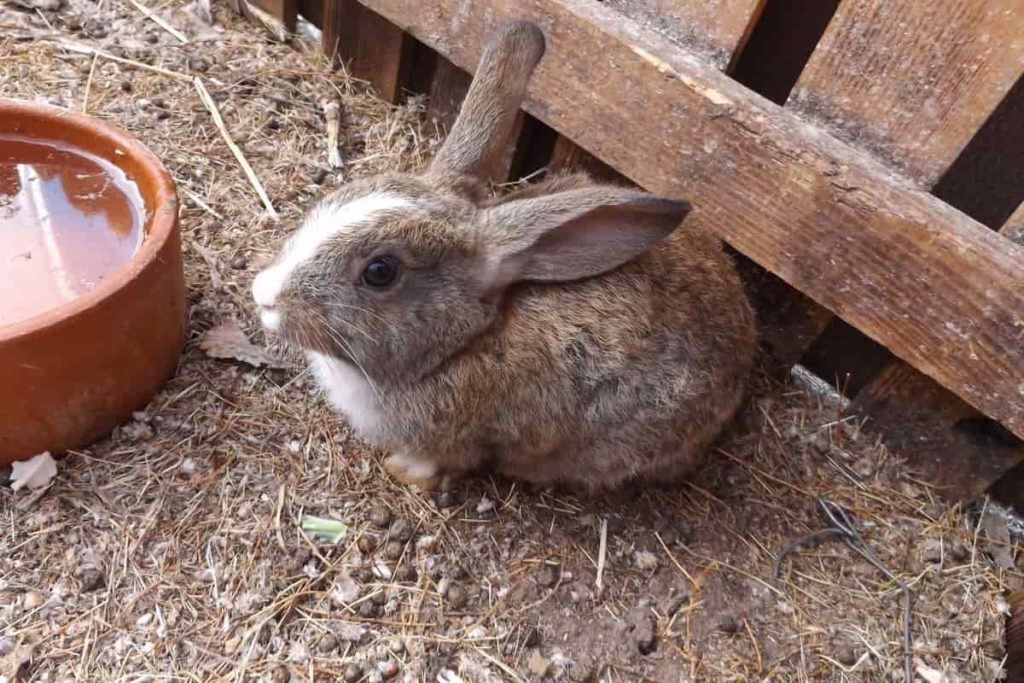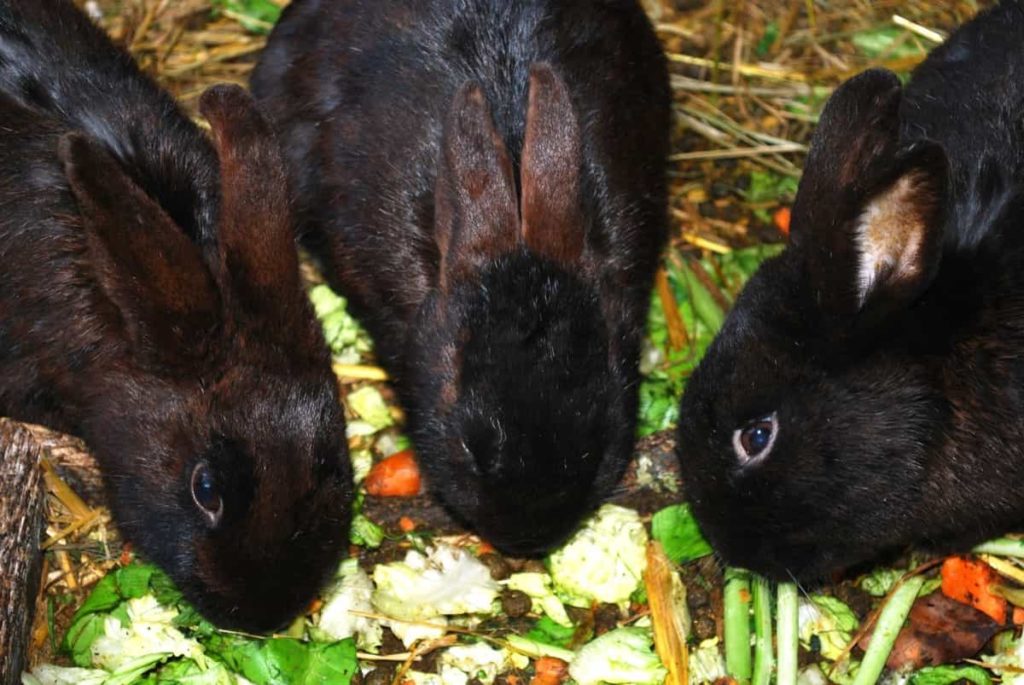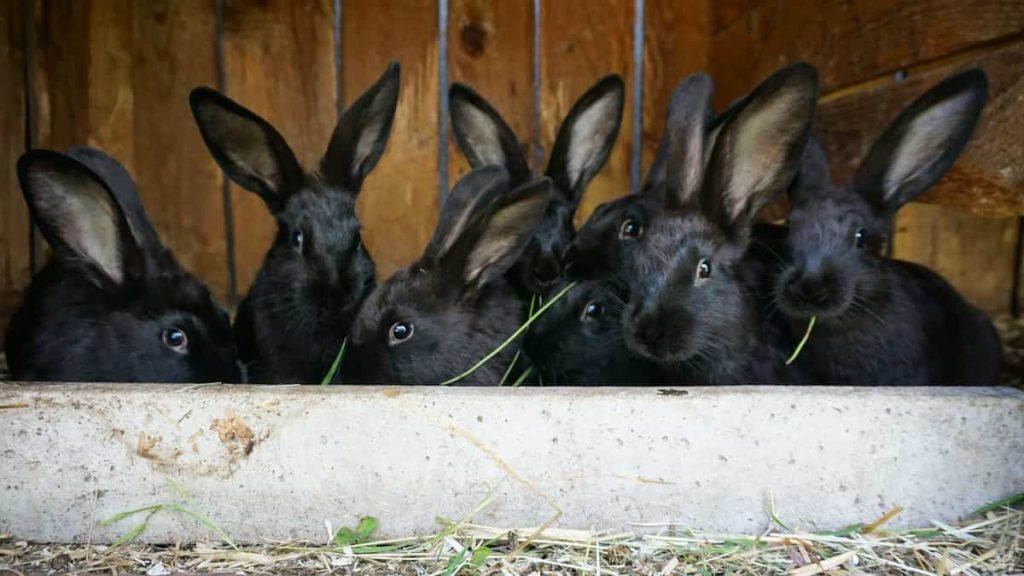Rabbit farming is a relatively new commercial venture. It needs less capital and land. Farmers are gradually turning to rabbit farming to boost their agricultural revenue. To meet the expanding population’s food need, we must develop new methods of food production. The rabbit is known as “Micro-Livestock” has the potential to be a tremendous source of food.

Rabbit farming has a lot of potentials, and commercial production may be a good source of money and employment. Rabbits require limited living space and a modest amount of food to survive. Rabbit meat has a higher protein, calorie, calcium, and vitamin content than any other animal flesh. Cholesterol, fat, and salt levels are also lower than in other meats. Let’s check out how this farmer made 1 lakh from Rabbit farming.
What are the advantages of Rabbit farming?
In comparison to other animal farming operations, rabbit farming involves less effort. Commercial production could be a tremendous source of income and employment because it requires relatively little capital and is a highly successful enterprise. Rabbit wool is 6–8 times warmer than sheep wool nowadays. It may be blended with silk, polyester, rayon, nylon, sheep wool, and other fibers to create high-quality handlooms and knitted clothing.
Rabbit farming has large profit margins, and rabbit output is consistent throughout the year because it is not a seasonal enterprise. Rabbits are a species that grows quickly. The pace at which they convert food is faster than that of other animals. A female rabbit can have anything from two to eight babies each time she gives birth.
Rabbit farming requires less space and can be done anywhere, including on the farm, in the backyard, on the terrace, or even at home. The cost of production is reduced when compared to other large animals. Rabbit meat is delectable, nutrient-dense, and easy to digest. Anyone, regardless of age, can eat without a problem. Rabbit meat is not seen as a religious offense. Rabbits are after the chickens. When it comes to meat manufacturing, there are a few things to consider.
In case you miss this: Top 50 Rabbit Farming Tips, Ideas, and Techniques

How this farmer made 1 lakh from Rabbit farming
Success story of Mr. Sumanth Reddy
Mr. Sumanth Reddy of Rajanna Sircilla district, Telangana has been rearing rabbits for four years. Despite some difficulties at the start, he constantly believed that there is a chance of high income in this business and now he is earning rupees one lakh per month. Before starting his rabbit farm, Mr. Sumanth traveled to several states to gain knowledge of rearing rabbits. He says that if we can find a proper source for selling our rabbits and with proper maintenance and some techniques we can easily gain profits in this particular business.
As rabbit farming requires less land and also less work we can easily maintain it and also develop new methods for rabbits to adopt. Demand for rabbit meat is growing constantly although in Telugu states there is no proper knowledge of rabbit farming yet, this can bloom into a very high profitable business in the coming days says, Mr. Sumanth.
Breed selection of Mr. Sumanth’s Rabbits
Mr. Sumanth’s farm consists of nearly 200 rabbits of different breeds, which include New Zealand White, Californian White, and Soviet Chinchilla. Any breed of rabbits are easy to grow and are less prone to diseases. So there will be no need for medication. In this way, its meat can be completely organic and rich in nutrients. For rearing, you can use New Zealand White, Californian White, Soviet Chinchilla, Grey Giant, Flemish Giant, and Black Giant breeds.
These breeds provide better results for rearing rabbits for commercial purposes. Angora, Dutch, Havana, and Sabine breeds are the breeds that are used for petting purposes. You should note that the petting breeds should not be used for rearing purposes. Among the breeds, Black Giant, Grey Giant, and Soviet Chinchilla have a high demand for meat.
In case you miss this: Organic Rabbit Farming – Production, Raising Practices

Shed construction details of Mr. Sumanth’s farm
Shed size of Mr. Sumanth is, 100 feet in length and 30 feet in width. In this shed, he rears nearly 200 rabbits in cages. Rabbits should be reared in cages inside the shed. This way they can be supplied with food and water easily. This whole shed along with cages cost him around rupees 1.5 lakh.
Feed management procedure according to Mr. Sumanth
Provide feed to the rabbits by preparing a feed schedule. If the food is not provided at a particular time daily then these little creatures can get hungry easily, which can result in weight loss. Because of high temperatures, rabbits don’t eat in the afternoons. They are most active in the evenings and at night, so providing feed in the evening can help them eat comfortably. Rabbits can eat normal organic matter and can convert this into protein-rich flesh in no time. This is the reason why its meat is high in nutrients.
Mr. Sumanth cultivates green feed in a half-acre of his land. As rabbits are herbivores you need to provide them with proper nutrient-rich feed. You should feed them in two ways, by using dry fodder and by using green fodder. Dry fodder should be provided for them in the mornings. Corn flour, wheat layers, and groundnut flour should be mixed in equal proportions and then a mineral mixture of the proper amount should be added to make the dry feed.
In case you miss this: Rabbit Feed Chart and Weight Chart

Dry feed makes rabbits hungry while providing them with rich nutrients, as a result, rabbits drink more water after eating dry feed which can help them in better growth of muscle tissue. So water and dry feed should be provided at the same time in the morning. Grass that is cultivated from Stylo, Lucerne, Hedge Lucerne seeds is given as green feed for rabbits. These types of grass can help them increase their growth rate and aids in the proper development of muscle tissue, says Mr. Sumanth.
Lucerne should be given to rabbits in little amounts. You should mix this with Stylo and Hedge Lucerne taken in equal proportions and give it to rabbits for feeding. Stylo has high nutrients that are required for rabbits and Hedge Lucerne cattle feed is the rabbits’ favorite, hence they should be given in equal amounts while providing the feed. You should avoid using any chemical insecticides and fertilizers while cultivating feed. Since rabbits are sensitive creatures, chemicals have a high chance of affecting their growth.
Rearing of Rabbits in Mr. Sumanth’s farm
Rabbits don’t get prone to diseases. If at all they develop diseases then it should be because of improper feed management or improper maintenance of shed. You should allot a particular time for feeding rabbits daily and feed them only at this particular time, if not it can damage the rabbits’ liver. This allows rabbits to get hungry at the time you give them food. This proper scheduling of feed management can have a positive effect on the growth of rabbits. Also, you must maintain your shed clean at any cost.
Rabbits’ health is highly dependent on how you maintain the shed. If the shed is maintained unclean then the rabbits can easily develop infections which result in less growth rate. At morning 7 am the shed gets cleaned by workers daily. After this, they provide the animals with dry feed and water. In the evenings green feed should be provided. At least once a week the feeders and drinkers should be cleaned.
While breeding rabbits you should avoid an in-breeding system. An inbreeding system means using the rabbits of the same shed for breeding purposes. The kids that are born by a male rabbit is grown and when they become mature they are made to breed with the same male rabbit with the help of which the kid rabbit is conceived. Mr. Sumanth says he uses rabbits from other sheds when it’s time for breeding. Also, you have to choose two rabbits of the same breed while breeding them.
In case you miss this: Rabbit Diseases, Treatment, Rabbit Care

If you choose to cross-breed then fertility problems can arise in the newly born kids. Male rabbits should be changed from time to time for breeding purposes, at least once a year. You must take proper care of the rabbits while breeding. Rabbits have a high growth rate and can grow up to 2 kgs in just three months when provided with proper feed and management. At the time of birth, rabbits can conceive 8 to 12 kids at once. Female rabbit takes 5 to 6 months to get mature while male rabbit attains maturity at 6 to 7 months from the time of their birth.
Even though it takes only months for them to get mature, you should select them for breeding once they cross the age of one year. From this, we can obtain healthy kids from the mother rabbits. Their pregnancy period is 30 days. Even if each female rabbit conceives 4 kids (which is less), we can obtain proper income after selling them. You should let the kids stay with their mother for at least one month after they are born. After this, you should leave them for 10 days, and then you can start another breed cycle with the mother rabbits.
Make sure you avoid breeding in summers. Because of high temperatures breeding should not be done in April and May. To protect the shed from high temperatures in summer, you should water your shed from time to time or spread gunny bags over your shed and water them constantly. This can make the environment inside the shed, cool. Also in winter, you should use curtains for the shed to protect your little creatures from cool breezes and for maintaining the warmth inside the shed.
Marketing and profit analysis of Mr. Sumanth’s Rabbit farm
Compared to goat, sheep, and dairy farming, we need less investment to start rabbit farming. The running cost of Mr. Sumanth’s rabbit farm, which consists of 200 rabbits, is around 2 lakh rupees per year. Although initially, your investment depends on the type of shed you construct for rabbits, as this is a one-time investment, this will be excluded from the total investment after the first batch.
In case you miss this: Rabbit Farming Business Plan, Cost, Profit Margin in India

If we consider that each rabbit gives birth to 4 kids (which is a minimum) then we will be having 800 kids that grow to 2 kgs in 120 days. So for every batch, we will be having 1600 kgs of live meat. And if we sell this by live weight system then we will have a minimum profit of rupees 1 lakh. In this way, Mr. Sumanth Reddy is earning more than rupees 1 lakh from rabbit farming.
Although there is no proper reach and understanding of rabbit farming yet, in the Telugu states, in the coming days this business has high chances of speeding up, says Mr. Sumanth. He suggests that young farmers get into this business right now and learn the techniques used for rabbit rearing, in this way when the demand increases in the coming days you will be supplying a large amount of rabbit meat and will be gaining higher profits.
- Economical Aquaculture: A Guide to Low-Budget Fish Farming
- 15 Common Planting Errors That Can Doom Your Fruit Trees
- How to Make Houseplants Bushy: Effective Tips and Ideas
- Innovative Strategies for Boosting Coconut Pollination and Yield
- Pollination Strategies for Maximum Pumpkin Yield
- The Complete Guide to Chicken Fattening: Strategies for Maximum Growth
- Natural Solutions for Tulip Problems: 100% Effective Remedies for Leaf and Bulb-Related Issues
- Revolutionizing Citrus Preservation: Towards a Healthier, Greener Future
- Natural Solutions for Peony Leaf and Flower Problems: 100% Effective Remedies
- Maximizing Profits with Avocado Contract Farming in India: A Comprehensive Guide
- Natural Solutions for Hydrangea Problems: 100% Effective Remedies for Leaf and Flowers
- The Ultimate Guide to Choosing the Perfect Foliage Friend: Bringing Life Indoors
- From Sunlight to Sustainability: 15 Ways to Use Solar Technology in Agriculture
- The Ultimate Guide to Dong Tao Chicken: Exploring from History to Raising
- The Eco-Friendly Makeover: How to Convert Your Unused Swimming Pool into a Fish Pond
- Mastering the Art of Delaware Chicken Farming: Essentials for Healthy Backyard Flocks
- 20 Best Homemade Fertilizers for Money Plant: DIY Recipes and Application Methods
- How to Craft a Comprehensive Free-Range Chicken Farming Business Plan
- Brighten Your Flock: Raising Easter Egger Chickens for Beauty and Bounty
- How to Optimize Your Poultry Egg Farm Business Plan with These Strategies
- Subsidy for Spirulina Cultivation: How Indian Government Schemes Encouraging Spirulina Farmers
- Ultimate Guide to Raising Dominique Chickens: Breeding, Feeding, Egg-Production, and Care
- Mastering the Art of Raising Jersey Giant Chickens: Care, Feeding, and More
- Ultimate Guide to Raising Legbar Chickens: Breeding, Farming Practices, Diet, Egg-Production
- How to Raise Welsummer Chickens: A Comprehensive Guide for Beginners
- How to Protect Indoor Plants in Winter: A Comprehensive Guide
- Ultimate Guide to Grow Bag Gardening: Tips, Tricks, and Planting Ideas for Urban Gardeners
- Guide to Lotus Cultivation: How to Propagate, Plant, Grow, Care, Cost, and Profit
- Agriculture Drone Subsidy Scheme: Government Kisan Subsidy, License, and How to Apply Online
- Ultimate Guide to Raising Araucana Chickens: Breed Profile, Farming Economics, Diet, and Care
- Bringing Hydroponics to Classroom: Importance, Benefits of Learning for School Students
- Ultimate Guide to Raising Polish Chickens: Breed Profile, Farming Economics, Diet, and Care
- Ultimate Guide to Raising Australorp Chickens: Profile, Farming Economics, Egg Production, Diet, and Care
- Silkie Chicken Farming: Raising Practices, Varieties, Egg Production, Diet, and Care
- Sussex Chicken Farming: Raising Practices, Varieties, Egg Production, Diet and Care
- Homemade Feed Formulations for Livestock: Discover Cost-effective Starter to Finisher Feed Recipes
Learn rabbit farming